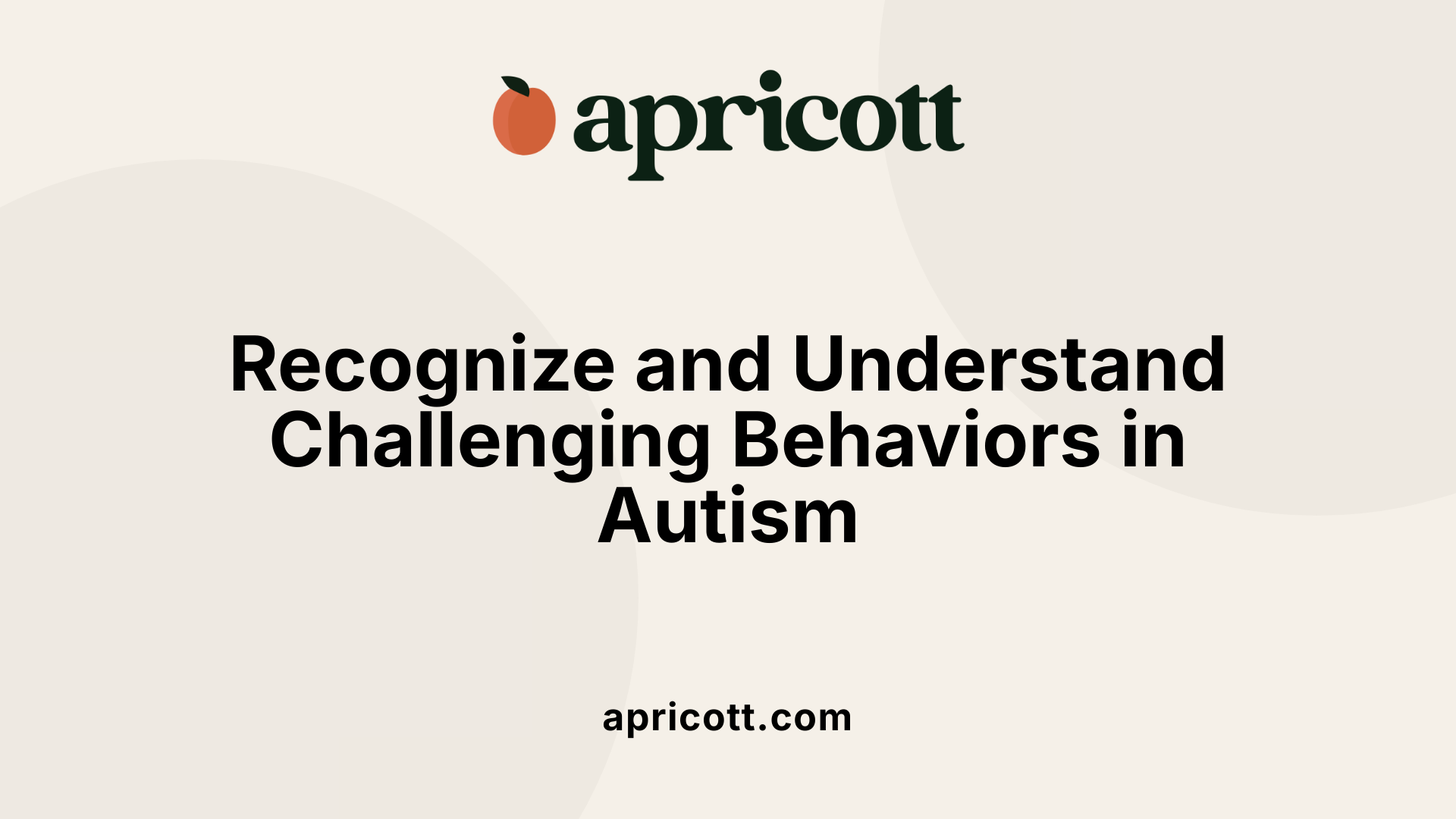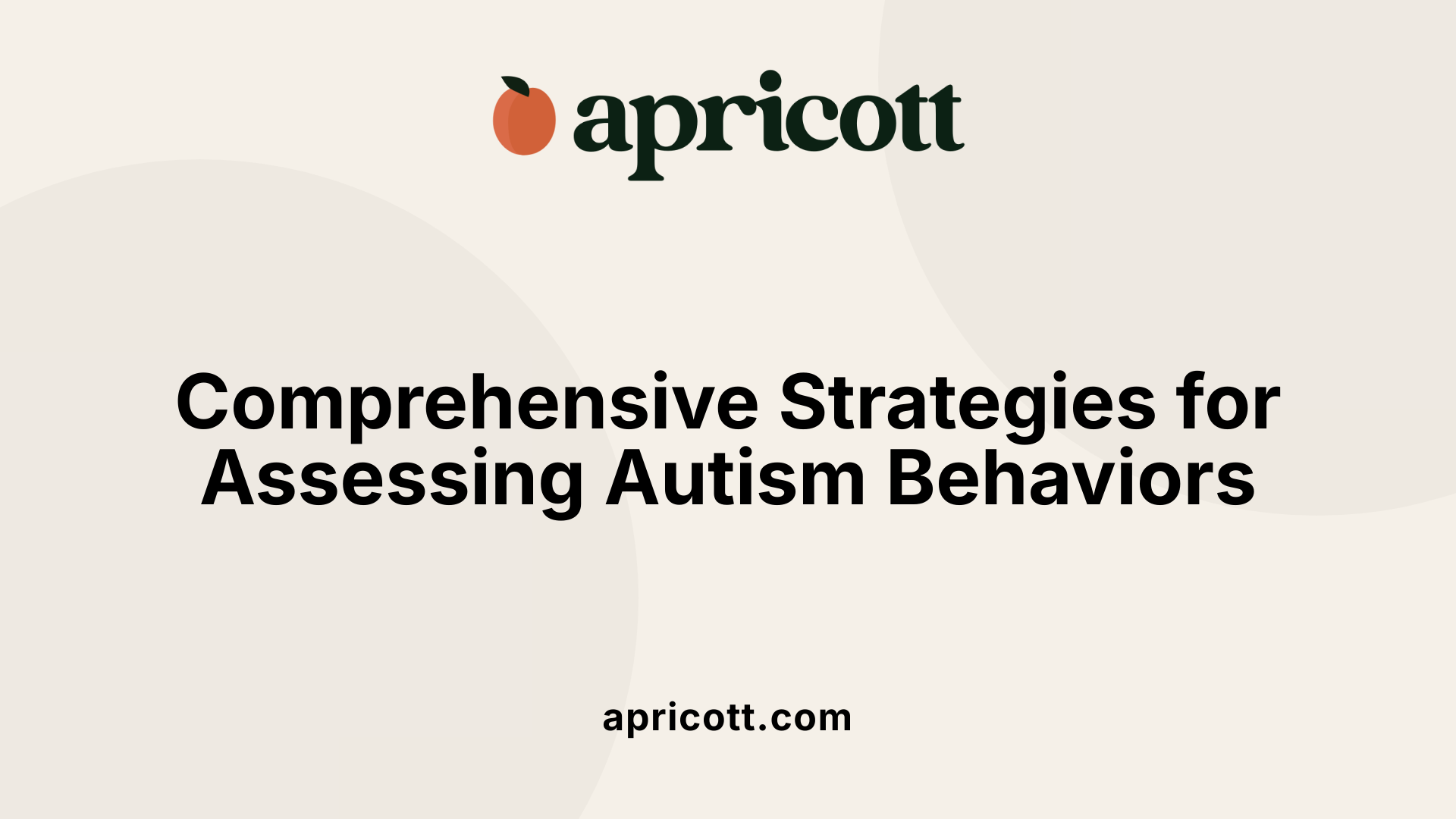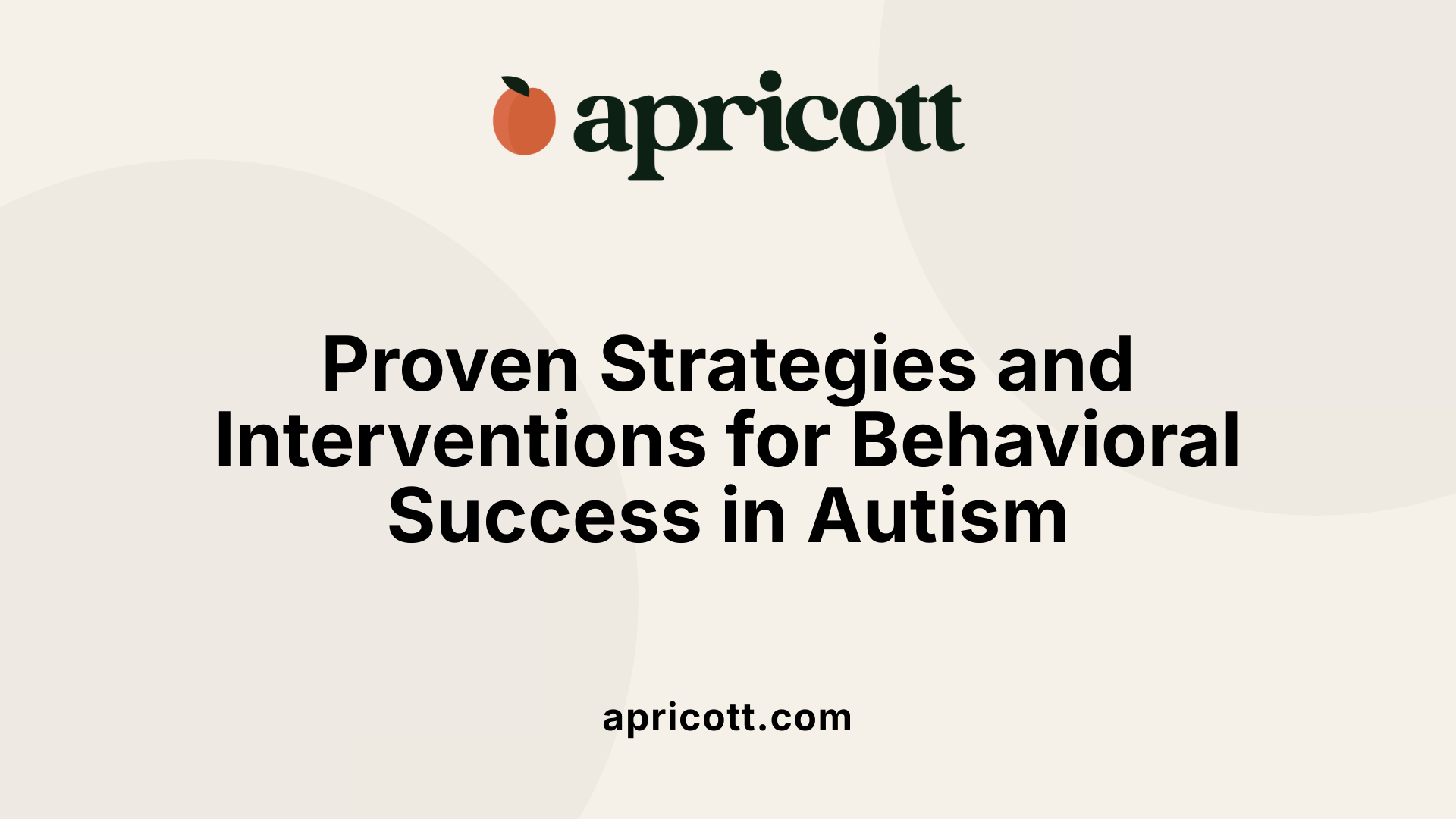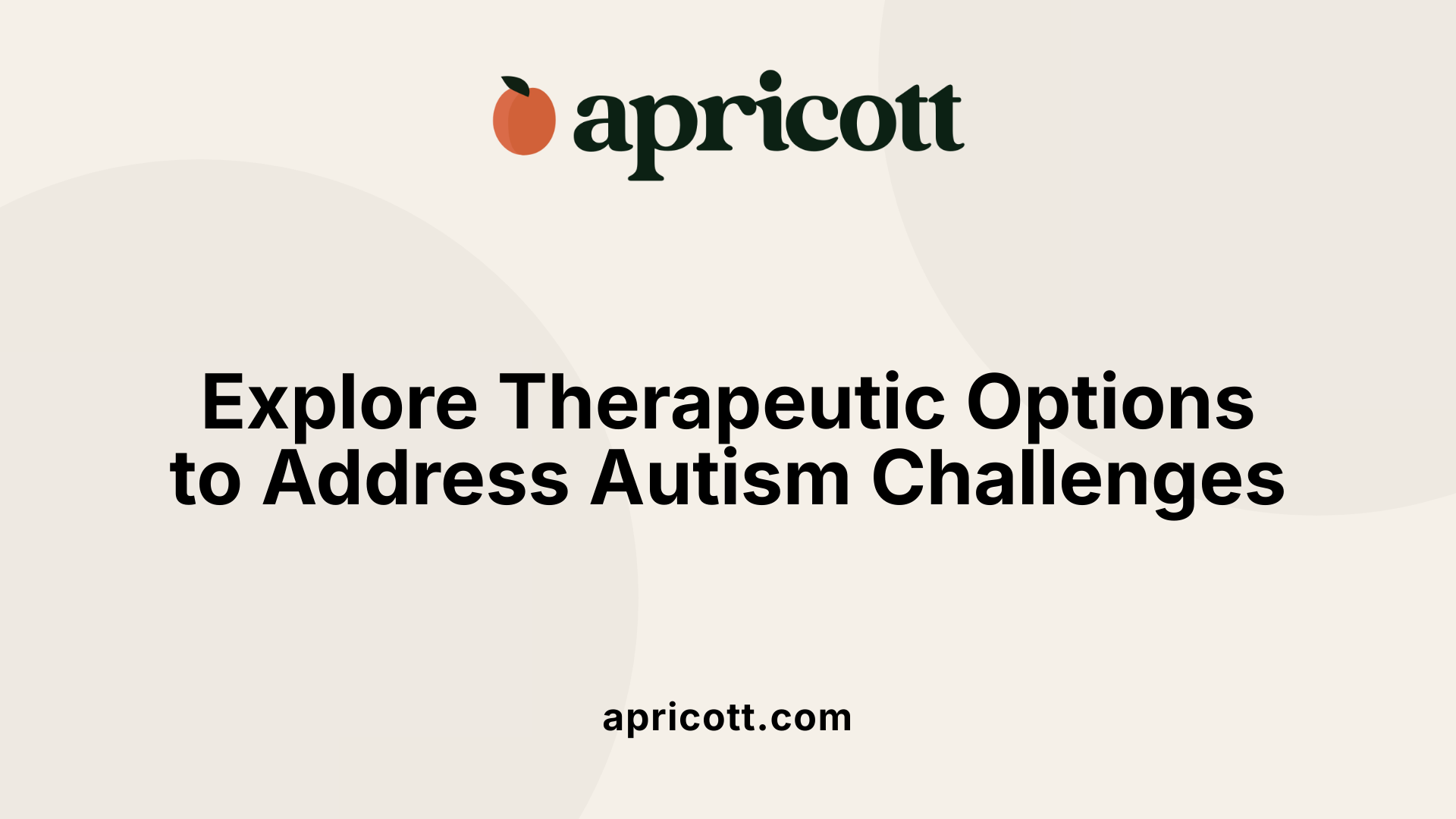Navigating the Complexity of Autism-Related Behaviors
Challenging behaviors are common in individuals with autism spectrum disorder (ASD), affecting their quality of life and that of their families. These behaviors, including self-injury, aggression, tantrums, and stereotypic movements, are often manifestations of underlying biological, emotional, and social factors. Recognizing and understanding the origins of these behaviors is essential for effective intervention. This article explores the nature, assessment, causes, and management strategies for challenging behaviors in autism, providing a comprehensive resource for caregivers, educators, and professionals.
Common Challenging Behaviors in Autism

What are common challenging behaviors in individuals with autism?
Many individuals with autism exhibit behaviors that can be challenging for families, teachers, and caregivers. These behaviors include self-injury, aggression, property destruction, tantrums, disruptiveness, and stereotypy (repetitive movements). Studies show that around 59% of people with autism will engage in some form of these behaviors at some point in their lives.
Self-injury such as hitting, biting, or banging the head can be persistent; a notable study by Laverty et al. (2020) found that 44% of children with autism who engaged in self-injurious behaviors continued doing so a decade later. Aggressive acts like hitting, kicking, or biting are common, especially in younger children, while older individuals are more likely to harm themselves if they have difficulty communicating.
Property destruction and tantrums are also frequent, often resulting from sensory overload, frustration, or difficulty understanding routines. Stereotypy, such as hand-flapping, rocking, or spinning, are repetitive movements that may serve as calming or self-stimulatory behaviors.
These challenging behaviors often stem from underlying causes such as communication difficulties, sensory sensitivities, or medical conditions like anxiety, gastrointestinal issues, or sleep problems. For example, discomfort from medical issues can increase agitation, while sensory input overloads can lead to meltdowns.
Behavioral assessments like the Functional Behavior Analysis (FBA), using tools such as the Motivation Assessment Scale (MAS), Questions About Behavioral Functions (QABF), and Functional Assessment Checklist (FAC), help identify the purpose of specific behaviors. Understanding whether behaviors serve functions like seeking attention, avoiding tasks, or providing sensory stimulation guides targeted intervention.
Management strategies focus on prevention, teaching replacement behaviors, and creating supportive environments. Approaches include positive reinforcement, sensory accommodations, communication support, and, if needed, medical and behavioral treatments. For example, medications like Risperidone may help reduce irritability or aggression, while behavioral therapies like Applied Behavioral Analysis (ABA) are used to improve communication and reduce harmful behaviors.
Overall, recognizing the diverse nature of these behaviors and their underlying causes enables the development of tailored interventions aimed at improving quality of life for individuals with autism and their families.
Assessment and Identification of Challenging Behaviors

How can challenging behaviors in autism be assessed and identified?
Understanding and addressing challenging behaviors in individuals with autism requires a thorough and multi-faceted assessment process. Professionals often utilize various tools and approaches to pinpoint the causes underlying behaviors such as self-injury, aggression, tantrums, and stereotypy.
One of the primary methods is the Functional Behavior Analysis (FBA), which systematically evaluates the reasons behind specific behaviors. This approach involves detailed behavioral observations in different settings, recording the context and circumstances when behaviors occur. Behavioral rating scales like the Motivation Assessment Scale (MAS), Questions About Behavioral Functions (QABF), and Functional Assessment Checklist (FAC) are also employed to gather data on the frequency, severity, and possible triggers of behaviors.
A core element of assessment is identifying behavioral triggers—antecedents that precede problematic actions. These might include environmental factors such as noise, lighting, or routine changes, or social interactions like attention-seeking or avoidance. Equally important is understanding internal causes, which involve medical and biological factors. For example, medical evaluations may reveal comorbid conditions such as gastrointestinal discomfort, sleep disturbances, or sensory processing difficulties that predispose an individual to challenging behaviors.
Sensory issues are a significant component in autism, affecting how individuals perceive and respond to their environment. Dysfunctions in interoceptive processing—the perception of internal bodily states—can lead to behaviors that serve to regulate internal discomfort or overstimulation. For instance, hyper-responsiveness to sensory input might result in agitation, while hypo-responsiveness could cause seeking behaviors.
Current assessment practices advocate for a multidisciplinary approach, combining behavioral observations, medical examinations, and caregiver reports. While behavioral tools like FBA help determine environmental triggers, medical assessments—including laboratory tests and neurodevelopmental evaluations—identify underlying biological causes. Researchers are also exploring innovative ways to assess internal states and sensory processing impairments, though these areas remain under active development.
Overall, accurate assessment of challenging behaviors in autism hinges on a comprehensive, individualized approach. Collaboration among behavioral therapists, medical professionals, and families enhances understanding and guides effective intervention strategies. Ongoing research aims to improve assessment methods, ultimately resulting in more tailored and successful behavioral support for individuals with ASD.
More Information Search Queries: behavior assessment autism, functional analysis, medical evaluation, sensory factors
By combining observational data, functional analysis, and medical insights, practitioners can better understand the complex factors that influence challenging behaviors in autism, leading to more precise and effective interventions.
Resources and Guidance for Managing Challenging Behaviors
 Managing challenging behaviors in individuals with autism requires a comprehensive approach utilizing various resources, professional guidance, and specialized intervention strategies.
Managing challenging behaviors in individuals with autism requires a comprehensive approach utilizing various resources, professional guidance, and specialized intervention strategies.
Professional services such as applied behavior analysis (ABA), speech therapy, occupational therapy, and social skills training are fundamental in addressing behaviors like aggression, self-injury, and tantrums. These interventions are tailored based on detailed assessments using tools such as the Motivation Assessment Scale (MAS), Questions About Behavioral Functions (QABF), and Functional Assessment Checklist (FAC). Working with behavior analysts and clinicians helps develop effective, individualized plans.
Organizations like Autism Speaks and the CDC provide extensive educational materials, support networks, and guidance to families and caregivers. The Autism Speaks Autism Treatment Network (ATN) offers resources like the Challenging Behaviors Roadmap and toolkit that focus on crisis management, preventative strategies, and fostering positive behaviors.
A variety of behavioral management techniques are employed, including positive reinforcement, visual supports, and offering choices to promote desirable behaviors. These methods support communication and reduce frustration by giving individuals a sense of control.
Caregiver training programs, such as the RUBI Parent Training Program, are designed to empower parents and caregivers with skills to prevent problem behaviors, teach new skills, and respond appropriately. The program involves weekly sessions focusing on reducing hitting, biting, tantrums, and noncompliance through evidence-based strategies.
Community resources and peer support groups are also vital. They provide a platform for shared experiences, advice, and emotional support, which are essential in managing the ongoing challenges of autism.
In addition, emerging therapy options center on addressing underlying biological and sensory factors. Interventions like DIR/Floor Time and PRT (Pivotal Response Treatment) further enhance social-emotional development, which can decrease problematic behaviors.
To sum up, managing challenging autism behaviors involves integrating evidence-based therapies, utilizing available resource guides, and involving multidisciplinary teams. Staying informed through published guidelines and support networks ensures families can adopt effective strategies and improve quality of life for individuals with autism.
Strategies and Interventions for Managing Challenging Behaviors

What strategies and interventions are effective for managing challenging behaviors in autism?
Managing challenging behaviors in individuals with autism requires a thoughtful approach that is tailored to each person's unique needs. Understanding the reasons behind behaviors—often related to communication difficulties, sensory sensitivities, or medical issues—is essential for effective intervention.
Prevention techniques focus on reducing triggers that might lead to problematic behaviors. This can include using visual schedules to help predict daily routines, social stories to prepare for upcoming changes, and priming activities to familiarize individuals with new environments or tasks. These strategies help lessen anxiety and uncertainty, which can often lead to challenging behaviors.
Replacing problematic behaviors with functional communication skills and coping strategies is crucial. Functional Communication Training (FCT) teaches individuals to express their needs clearly, reducing frustration-driven behaviors such as aggression or self-injury. Additionally, teaching relaxation techniques and coping skills helps individuals manage emotional arousal and sensory overload more adaptively.
Response strategies are designed to strengthen positive behaviors. Positive reinforcement involves rewarding desired actions, such as using a preferred activity or praise after compliance with instructions. Extinction, where reinforcement for problematic behaviors is withheld, can also reduce their occurrence over time.
In acute situations, crisis management techniques focus on de-escalation and sensory regulation to ensure safety. This may involve calming sensory activities, such as deep pressure or a quiet space, and maintaining a calm, predictable environment.
Caregiver training programs, like the RUBI Parent Training Program, empower families and caregivers to consistently implement behavior support strategies. These programs emphasize teaching strategies that prevent problem behaviors, promote positive alternatives, and respond effectively to challenging episodes.
Interventions such as Applied Behavioral Analysis (ABA), naturalistic developmental approaches, and multidisciplinary assessments are supported by extensive research. They involve data collection, individualized goal setting, and collaboration with professionals from different disciplines.
Overall, the success of behavior management depends on individualizing interventions—considering medical, sensory, social, and emotional factors—and ensuring consistency across all environments such as home, school, and community. Building this comprehensive approach helps promote better functioning, reduces distress, and improves the quality of life for individuals with autism.
Therapeutic Programs and Treatments for Autism Behaviors

What types of therapies and programs are available to address autism-related challenging behaviors?
There is a wide range of therapies and programs designed to help manage and reduce challenging behaviors in individuals with autism. Many of these interventions are evidence-based, meaning they are supported by scientific research and tailored to the unique needs of each individual.
One of the most widely used approaches is Applied Behavior Analysis (ABA). ABA uses principles of operant conditioning to reinforce positive behaviors and decrease problematic ones. Early interventions like Early Intensive Behavioral Intervention (EIBI) and models such as the Early Start Denver Model (ESDM) focus on teaching new skills, improving social communication, and reducing behaviors like self-injury and aggression.
Parent training programs also play a crucial role. The RUBI Parent Training Program, for example, offers structured, one-on-one sessions to teach caregivers effective strategies to handle behaviors such as hitting, biting, or tantrums. This empowers families to implement consistent behavioral strategies at home, which is vital for long-term success.
In addition to behavioral interventions, in-clinic therapies such as speech therapy, occupational therapy, and social skills training support improvements in communication, daily living skills, and social interactions. These therapies often include specific response strategies like positive reinforcement, extinction procedures, and functional communication training—techniques used to encourage desired behaviors and prevent emotional crises.
Addressing specific issues like sleep disturbances, eating problems, or toileting difficulties is also critical. These are often incorporated into comprehensive treatment plans, tailored to the individual's needs and coordinated with educational and clinical services.
For complex cases, programs like the Biobehavioral Outpatient Program offer short-term ABA therapy for children and teens with severe behavioral challenges such as self-injury or aggression. These programs focus on safety, communication, and reducing harmful behaviors.
In summary, evidence-based therapies and programs provide a multifaceted approach to autism management. They involve behavioral strategies, caregiver training, and specialized therapies that work together to improve overall functioning and quality of life for individuals with autism.
Underlying Medical, Behavioral, and Neurological Factors
Challenging behaviors in autism are influenced by an intricate combination of medical, neurological, and behavioral factors. Medical comorbidities such as anxiety, sleep disturbances, gastrointestinal issues, and allergies often serve as internal stressors that can intensify behaviors like aggression, self-injury, or tantrums.
Neurologically, individuals with autism may experience differences in sensory processing and interoception—the ability to sense internal bodily states. Impairments in interoception, whether hyper-responsiveness or hypo-responsiveness, can lead to difficulty recognizing or managing internal signals such as pain, hunger, or fatigue. These sensory and internal awareness challenges can cause distress, which, without proper communication skills, may manifest as challenging behaviors.
Genetic factors can also play a role, affecting brain development and function, which may lead to specific neurological profiles associated with behavioral difficulties.
Moreover, behavioral factors often develop as coping mechanisms or communication strategies. When verbal skills are limited, behaviors like self-injury or property destruction may serve to express needs, seek attention, or escape uncomfortable situations.
Environmental elements such as routine changes, overstimulating surroundings, or social interactions can further escalate these behaviors, which are often maintained through reinforcement patterns—a process explained by operant conditioning.
Understanding these contributing factors calls for comprehensive assessments that include medical evaluations, neurological testing, and behavioral analysis. Addressing underlying medical issues and sensory processing challenges can significantly reduce challenging behaviors and improve quality of life for individuals with autism.
For those seeking more information, searches on terms like "medical and neurological factors autism," "sensory processing in autism," "interoception deficits autism," "anxiety in autism," and "genetic influences on autism" provide valuable insights into the complex biological underpinnings of these behaviors.
Practical Tips for Caregivers and Support Strategies
What practical tips can help caregivers support individuals with autism who exhibit challenging behaviors?
Caregivers play a vital role in managing and reducing challenging behaviors in individuals with autism. One of the most effective approaches is to keep routines predictable and consistent, as changes or surprises can often trigger anxiety or agitation. Using visual supports like picture schedules or social stories helps individuals understand what to expect, reducing uncertainty and frustration.
Conducting functional behavioral assessments (FBAs) is crucial for identifying the specific causes behind behaviors such as aggression, self-injury, or tantrums. These assessments can reveal whether behaviors are linked to sensory overload, medical issues, communication difficulties, or environmental triggers. Once the root causes are understood, caregivers can tailor interventions accordingly.
Reinforcing positive behaviors through reward systems, such as praise or preferred activities, encourages desirable actions. Teaching functional communication skills—like using gestures, picture exchange, or communication devices—provides individuals with alternatives to problematic behaviors when they need to express their needs or frustrations.
Addressing sensory needs is also essential. Providing calming activities, such as deep pressure, comfortable lighting, or sensory toys, can help regulate sensory sensitivities. Meeting medical and emotional needs by ensuring regular health checkups and emotional support can prevent behaviors caused by discomfort or pain.
A calm, consistent, and patient response during episodes of challenging behavior is vital. Responding calmly without escalation helps de-escalate situations. Collaboration with professionals such as behavioral therapists, occupational therapists, and medical providers enhances the support plan, ensuring interventions are effective and safe.
In summary, combining routines, clear communication, sensory strategies, medical care, and professional input creates a supportive environment that minimizes triggers and promotes positive development, helping both individuals with autism and their caregivers.
Empowering Families and Professionals to Make a Difference
Understanding the multifaceted nature of challenging behaviors in autism and employing tailored, evidence-based strategies can significantly improve outcomes for individuals with ASD. Ongoing assessment, professional guidance, caregiver support, and a compassionate approach are essential components of effective management. Through collaborative efforts, families, educators, and clinicians can foster environments that reduce distress, promote positive behaviors, and enhance the quality of life for those on the spectrum.
References
- Challenging Behaviors and Autism
- Understanding Challenging Behaviors in Autism Spectrum ...
- Behavior challenges
- Challenging Behaviors
- Distressed behaviour - a guide for all audiences
- Challenging behaviour: autistic children and teenagers
- Editorial - Challenging behaviors in adults with autism
- How to help with your autistic child's behaviour
- Therapies for Challenging Behaviors – Autism Center
.svg)
.svg)








